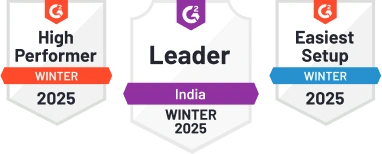Key Responsibility Areas (KRAs) & Key Performance Indicators (KPIs) for Fashion Buyer
1. Merchandise Selection and Procurement
KRA: Responsible for selecting and procuring fashion merchandise to meet customer demands.
Short Description: Ensuring the right products are available at the right time.
- Number of new products added monthly
- Inventory turnover rate
- Percentage of popular items restocked timely
- Vendor relationship satisfaction score
2. Trend Analysis and Forecasting
KRA: Analyzing market trends and forecasting future fashion demands.
Short Description: Staying ahead of the fashion curve.
- Accuracy of trend predictions
- Lead time on trend implementation
- Percentage of successful trend adoptions
- Competitor trend analysis coverage
3. Pricing and Profit Margin Management
KRA: Setting competitive prices while maintaining healthy profit margins.
Short Description: Balancing pricing strategies for profitability.
- Profit margin percentage
- Price competitiveness index
- Average order value growth
- Pricing strategy effectiveness rating
4. Supplier Management and Negotiation
KRA: Managing relationships with suppliers and negotiating favorable terms.
Short Description: Securing the best deals for the business.
- Supplier contract renewal rate
- Cost-saving percentage through negotiations
- Supplier delivery time adherence
- Supplier satisfaction survey score
5. Inventory Control and Optimization
KRA: Monitoring inventory levels and optimizing stock to reduce carrying costs.
Short Description: Efficient management of stock levels.
- Inventory turnover ratio
- Stockout rate
- Obsolete inventory percentage
- Inventory carrying cost reduction
6. Sales Performance Analysis
KRA: Analyzing sales data to identify trends and opportunities for growth.
Short Description: Maximizing sales through data-driven insights.
- Sales revenue growth rate
- Conversion rate optimization
- Customer retention rate
- Sales by category analysis
7. Marketing Campaign Collaboration
KRA: Collaborating with marketing teams to align merchandise strategies with promotional activities.
Short Description: Ensuring products are marketed effectively.
- ROI of collaborative marketing campaigns
- Alignment of merchandise with campaign themes
- Customer engagement metrics from campaigns
- Incremental sales from marketing initiatives
8. Supplier Diversity and Sustainability
KRA: Promoting supplier diversity and sustainability practices in sourcing.
Short Description: Supporting ethical and eco-friendly sourcing.
- Percentage of sustainable suppliers onboarded
- Diversity spend ratio
- Supplier sustainability compliance score
- Positive brand impact through supplier partnerships
9. E-commerce Merchandising Strategy
KRA: Developing and implementing merchandising strategies for e-commerce platforms.
Short Description: Enhancing online product visibility and conversion.
- Online sales growth rate
- Click-through rate on product pages
- Conversion rate on e-commerce platforms
- Customer reviews and ratings improvement
10. Market Research and Competitor Analysis
KRA: Conducting market research and analyzing competitor strategies to inform buying decisions.
Short Description: Staying informed about industry trends and competitors.
- Market share growth compared to competitors
- Competitor price benchmarking analysis
- New market opportunities identified
- Customer sentiment analysis on competitor brands







